Spoonbills, with their distinctive spoon-shaped bills and elegant presence, epitomize the grace and charm of the avian world.
In this captivating avian biography, we delve into the fascinating lives of spoonbills, exploring their unique features, behaviors, and ecological significance.
From their intricate courtship displays to their migratory journeys spanning continents, spoonbills captivate bird enthusiasts and researchers alike.
Join us on a journey into the enchanting realm of spoonbills as we unravel the mysteries of their evolutionary adaptations, breeding habits, and conservation challenges.
Get ready to be mesmerized by the graceful world of spoonbills, where beauty meets functionality in one of nature’s most enchanting creations. So, stay sharp.
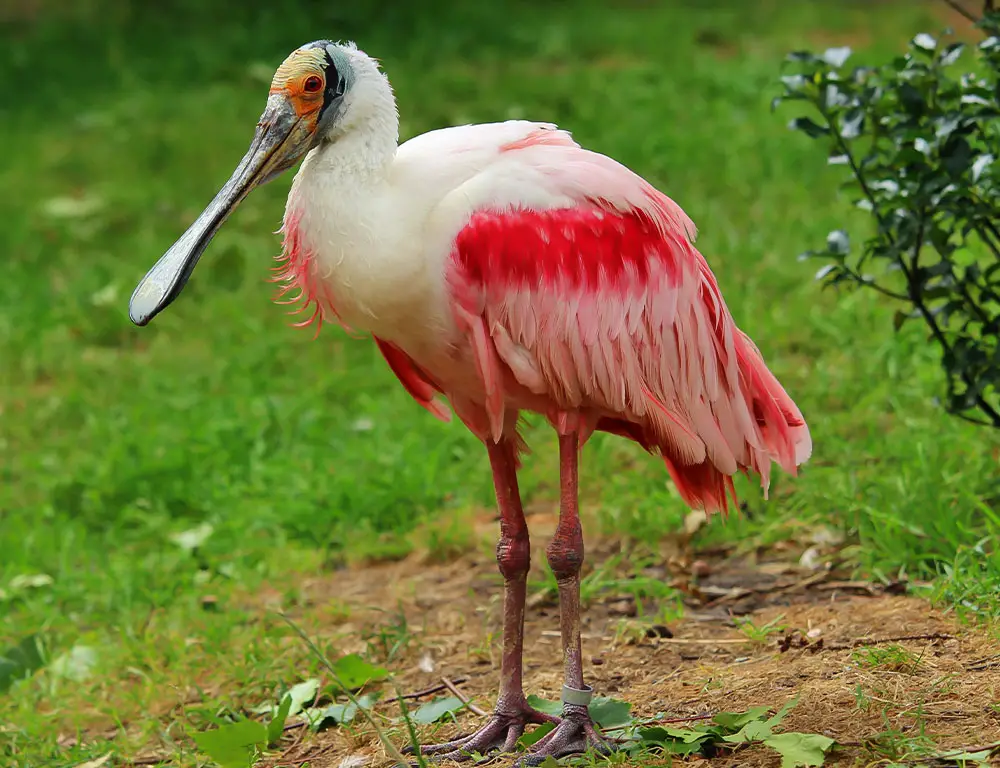
Origins and Taxonomy of Spoonbills
Spoonbills are a group of large, long-legged, wading birds characterized by their distinctive spoon-shaped bills. They belong to the family Threskiornithidae, which also includes ibises and herons.
Taxonomically, spoonbills are classified under Pelecaniformes, encompassing various aquatic birds such as pelicans, frigatebirds, and herons.
Spoonbills are divided into six species, each with unique characteristics and distributions.
Here’s a table summarizing the taxonomical details of spoonbills:
| Kingdom | Animalia |
| Phylum | Chordata |
| Class | Aves |
| Order | Pelecaniformes |
| Family | Threskiornithidae |
| Genus | Platalea |
Within the genus Platalea, there are six recognized species:
- Eurasian spoonbill (Platalea leucorodia)
- Royal spoonbill (Platalea regia)
- African spoonbill (Platalea alba)
- Black-faced spoonbill (Platalea minor)
- Yellow-billed spoonbill (Platalea flavipes)
- Roseate spoonbill (Platalea ajaja)
While there are no recognized subspecies within the genus Platalea, each of the six species of spoonbills exhibits some variation in plumage, size, and behavior across their geographic ranges.
Eurasian Spoonbill (Platalea leucorodia)
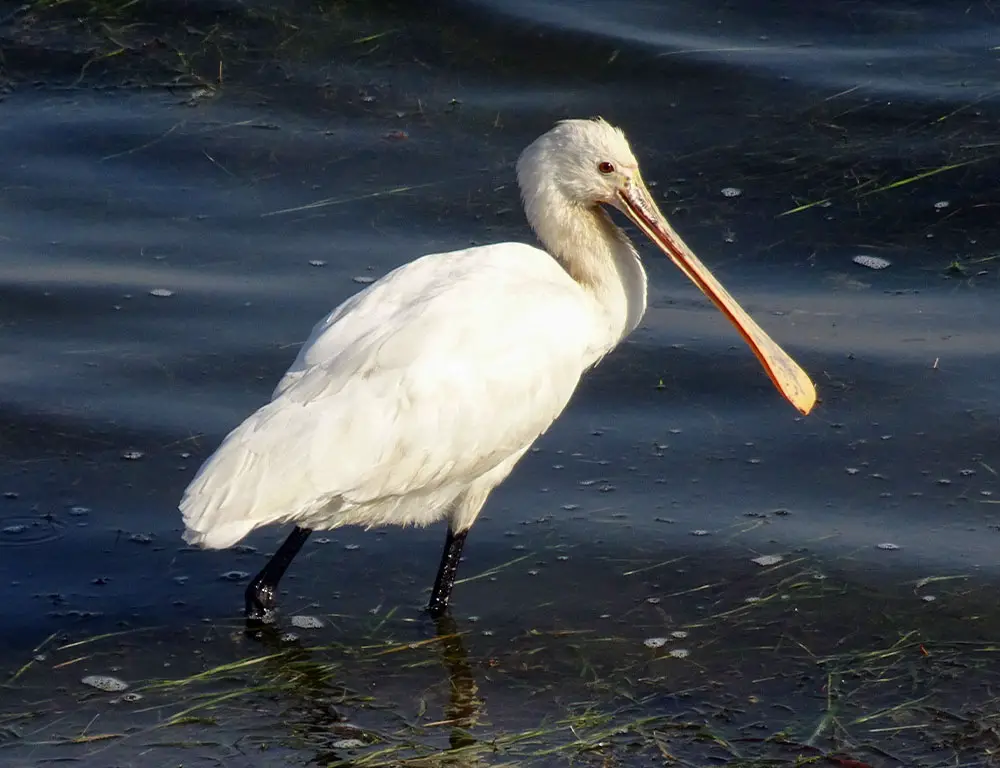
- Found in Europe, Asia, and Africa.
- Plumage varies from pure white to pale yellow, with black wingtips in breeding adults.
- Breeds in colonies in marshes and wetlands.
Royal Spoonbill (Platalea regia)
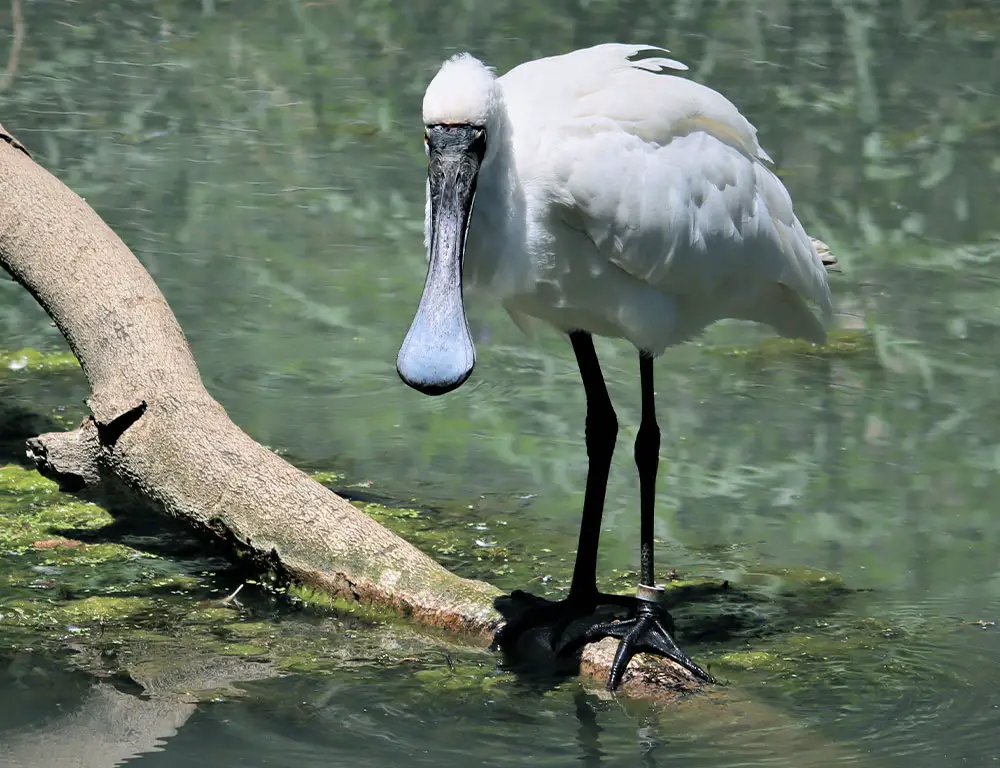
- Native to Australia, New Zealand, and some Pacific islands.
- Distinctive black bill with a yellow tip during breeding season.
- Often seen foraging in shallow water for crustaceans and fish.
African Spoonbill (Platalea alba)
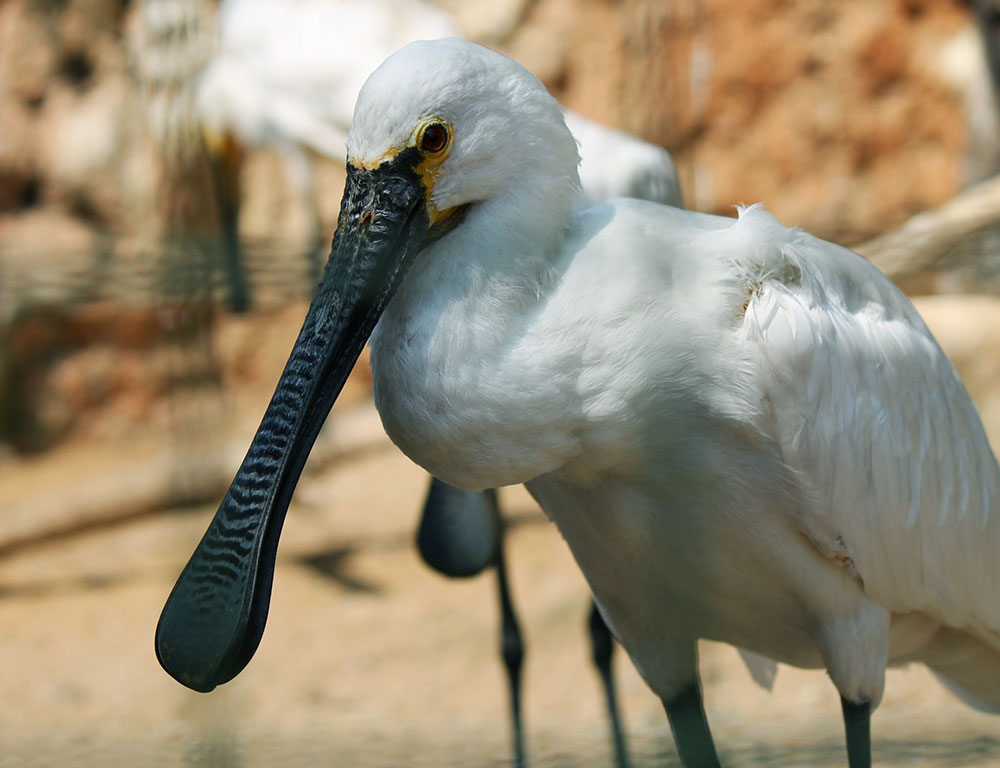
- Found throughout sub-Saharan Africa.
- Features a predominantly white plumage with a pink face patch.
- Prefers freshwater habitats like lakes, rivers, and estuaries.
Black-faced Spoonbill (Platalea minor)
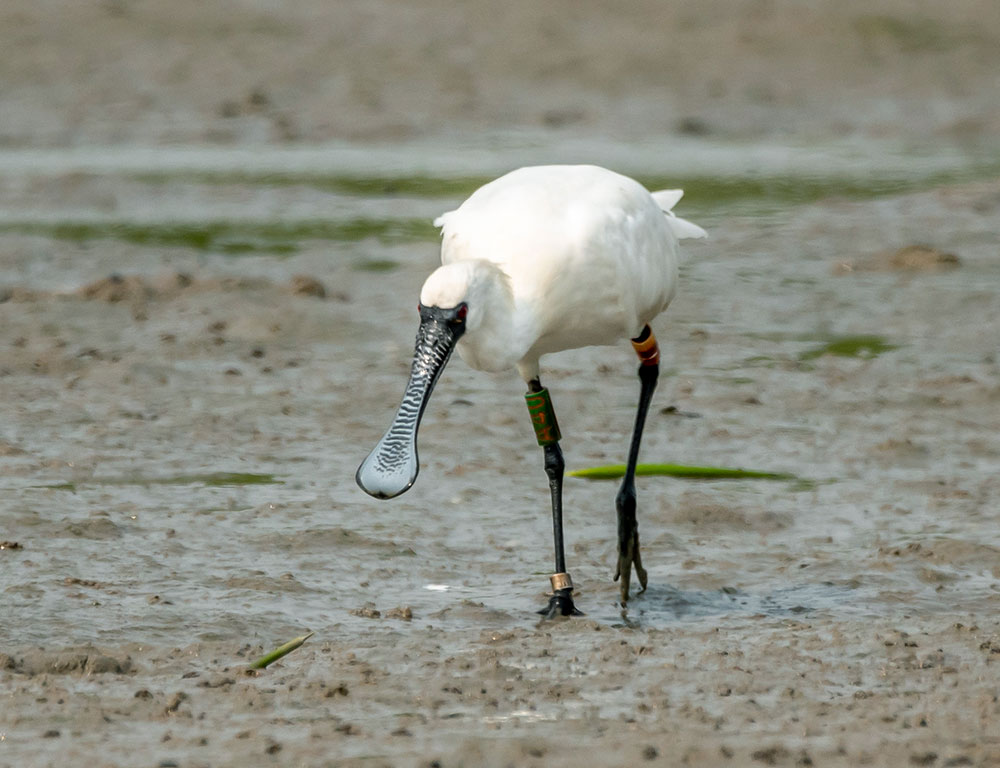
- Mainly distributed in East Asia, particularly in China, Korea, and Japan.
- Named for its unique black facial skin.
- Often inhabits tidal flats and mudflats for feeding.
Yellow-billed Spoonbill (Platalea flavipes)
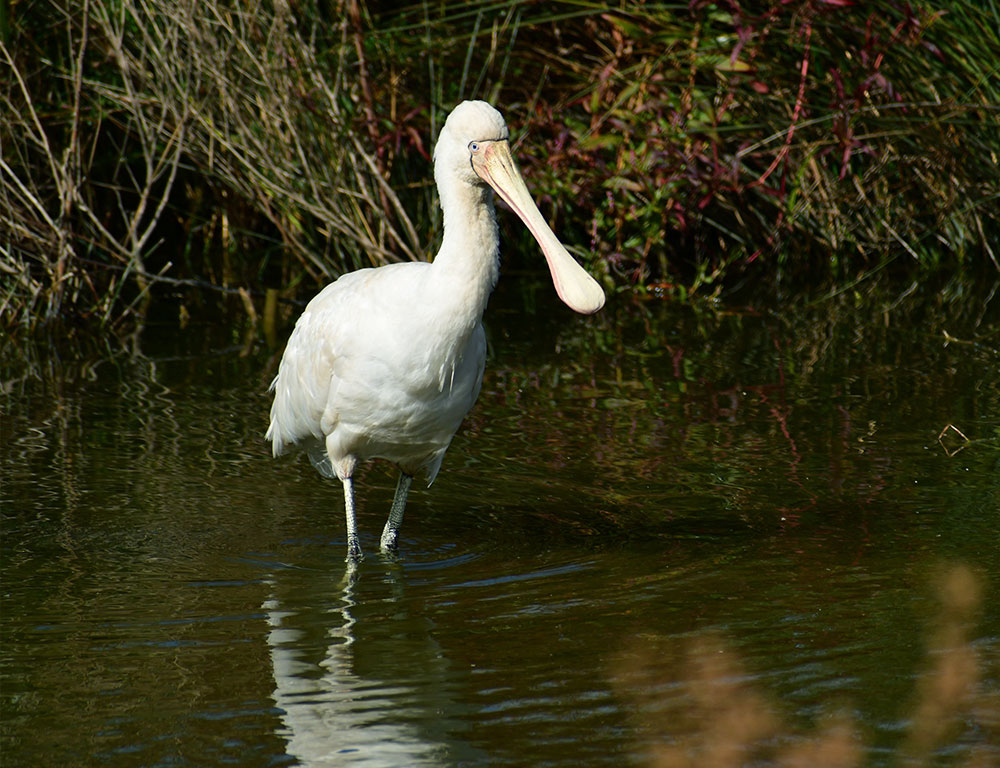
- Endemic to Australia and Tasmania.
- Distinguished by its yellow spatulate bill.
- Frequents in both freshwater and saltwater habitats.
Roseate Spoonbill (Platalea ajaja)
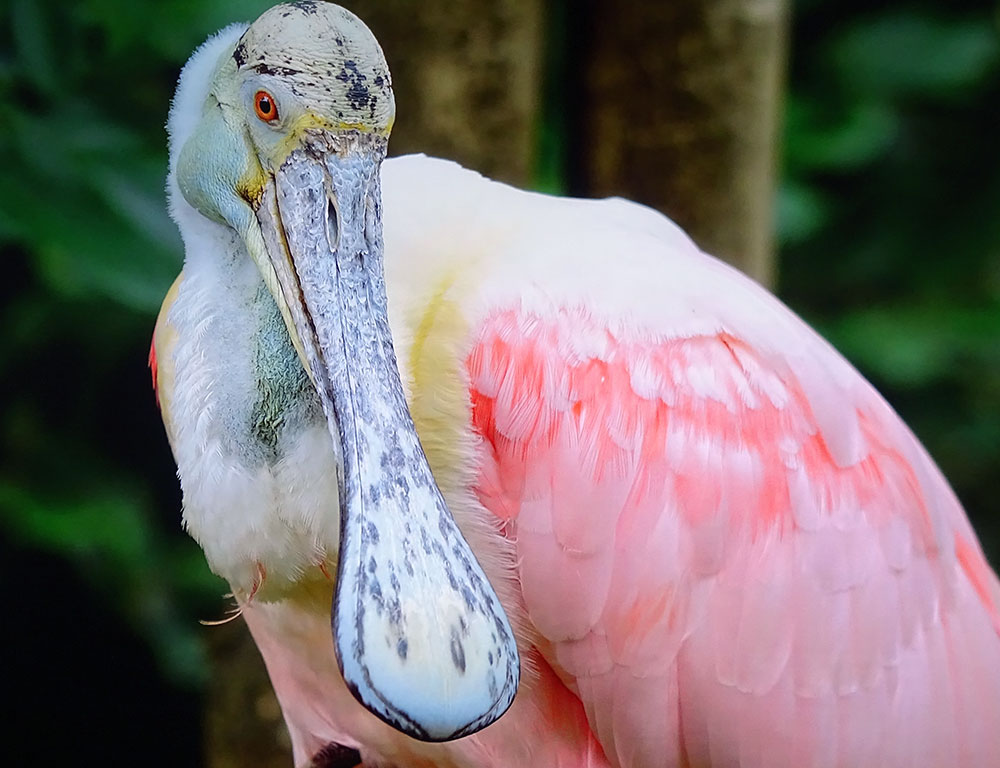
- Native to the Americas, from the United States to Argentina.
- Characterized by its bright pink plumage and spatulate bill.
- Nests in colonies in mangrove swamps and other wetland areas.
How to Identify Spoonbills?
Identifying spoonbills in the wild can be straightforward due to their distinctive physical characteristics. Here’s a guide to identifying them:
- Distinctive Bill: Spoonbills are named for their spoon-shaped bills, which are long, flat, and rounded at the tip. This feature is highly unique and easily recognizable.
- Plumage: While plumage can vary among species, spoonbills typically have predominantly white feathers, sometimes tinged with pink or yellow. Some species, like the Roseate Spoonbill, have more vibrant pink plumage.
- Facial Features: Look for unique facial features, such as facial patches or coloration around the eyes. For example, the African Spoonbill has a pink face patch, while the Black-faced Spoonbill has distinctive black facial skin.
- Size and Shape: Spoonbills are large birds with long legs, necks, and wings. They often stand tall while wading in shallow water and have a graceful, sweeping flight pattern.
- Habitat: Spoonbills typically inhabit wetland areas such as marshes, swamps, mudflats, and estuaries. Observing them in these habitats can help confirm their identity.
- Behavior: Watch for their feeding behavior, which often involves sweeping their bills from side to side in shallow water to catch fish, crustaceans, and other aquatic prey.
You can confidently identify spoonbills when observing them in the wild by paying attention to these key features and behaviors.
Diet and Feeding Ecology of Spoonbills
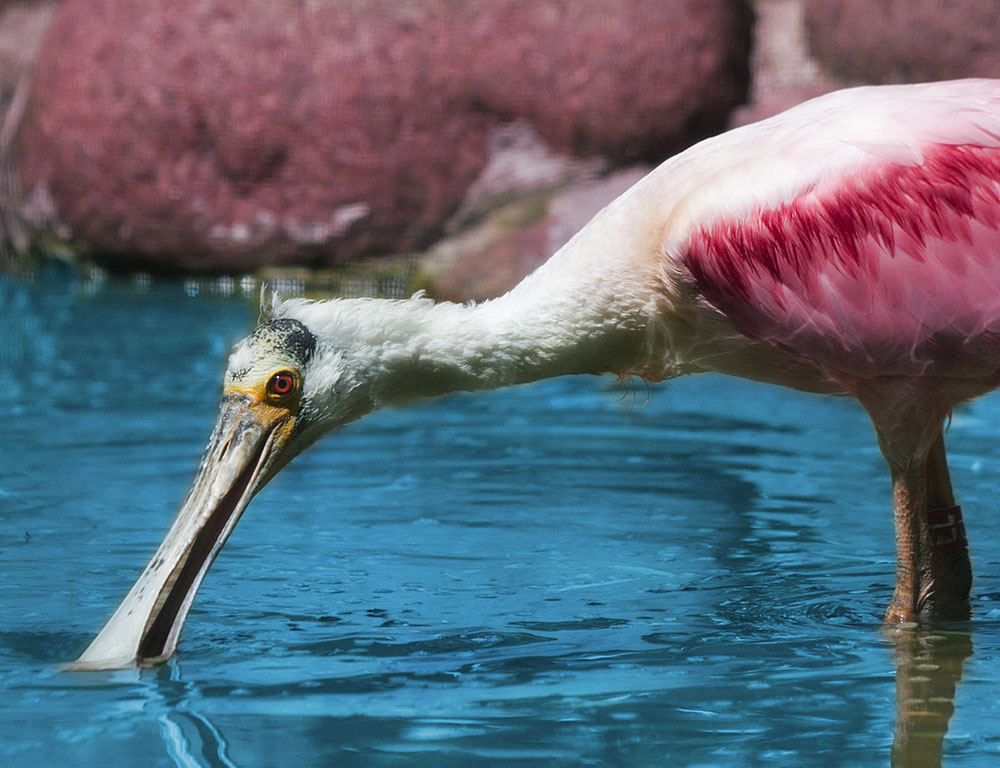
Spoonbills are highly specialized wading birds with unique feeding behaviors and diets adapted to their wetland habitats.
Their distinctive spoon-shaped bills play a crucial role in their feeding ecology, enabling them to capture various prey from shallow waters efficiently.
Diet Composition
Spoonbills are primarily carnivorous, with their diet consisting mainly of small aquatic invertebrates, fish, crustaceans, amphibians, and occasionally plant matter.
The exact composition of their diet varies depending on factors such as species, location, and seasonal availability of prey. They are opportunistic feeders who consume whatever prey is abundant and easily accessible in their habitat.
Feeding Behavior
Spoonbills employ a unique feeding technique known as tactile feeding. They wade through shallow water, often in groups, and sweep their bills from side to side in a semicircular motion.
The sensitive tips of their bills detect prey items in the murky water, and once detected, they snap their bills shut to capture the prey.
This sweeping motion allows them to cover a large area efficiently and capture prey without relying heavily on sight.
Habitat and Foraging
Spoonbills are typically found in various wetland habitats, including marshes, swamps, estuaries, mudflats, and shallow coastal waters.
These habitats provide abundant food sources such as small fish, aquatic insects, mollusks, and crustaceans. Spoonbills are well adapted to foraging in these shallow waters, where they can easily access their prey.
Breeding Season and Diet Shifts
During the breeding season, spoonbills may shift their diet slightly to include more protein-rich foods to support their reproductive efforts.
This may include increased consumption of more oversized prey items such as fish and crustaceans to meet the increased energy demands of breeding, egg-laying, and chick-rearing.
Spoonbills play a vital role in wetland ecosystems as top predators, helping to regulate populations of prey species and contributing to the overall health and balance of their habitats through their feeding ecology.
Spoonbills’s Reproduction and Life Cycle
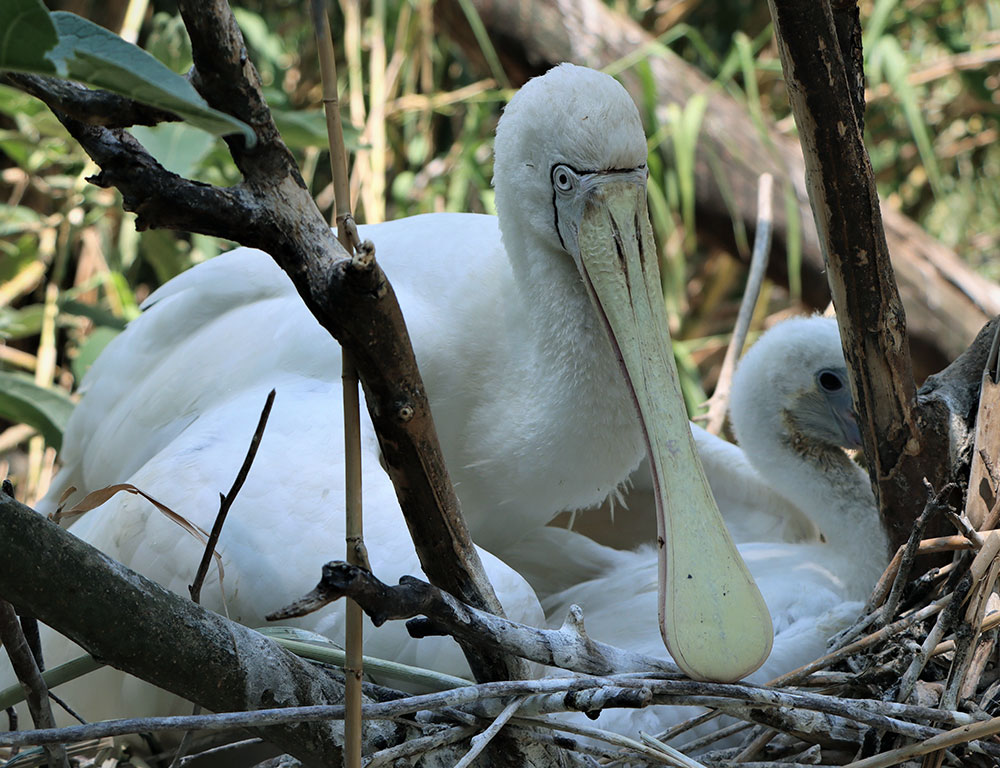
Spoonbills are fascinating birds with unique reproductive behaviors and life cycles. Let’s delve into their reproduction and life cycle:
Breeding Season
Spoonbills typically breed during the spring and summer, varying slightly depending on their geographic location and species.
Breeding usually occurs in colonies, often in densely vegetated areas such as marshes, mangroves, or islands within wetlands.
Courtship Displays
Spoonbills engage in elaborate courtship displays during the breeding season to attract mates. These displays often involve aerial acrobatics, ritualized movements, and vocalizations.
Nesting
Spoonbills construct large, shallow nests of sticks, reeds, and other vegetation.
They may line the nests with softer materials such as grass or feathers. Nests are typically built in trees, shrubs, or on the ground, depending on the species and available habitat.
- Nest Construction: Spoonbills typically build large, shallow nests of sticks, reeds, and other vegetation. For added comfort, they may line the nests with softer materials such as grass or feathers.
- Location Selection: Nest sites are carefully chosen in densely vegetated areas, often within wetlands, marshes, or mangroves. Depending on habitat availability and suitability, some species may also nest in trees, shrubs, or on the ground.
- Breeding Colonies: Spoonbills are colonial nesters, often forming breeding colonies with other individuals of their species. These colonies can range from a few pairs to hundreds or even thousands of nesting pairs, providing safety in numbers and facilitating social interactions.
- Incubation and Parental Care: Both male and female spoonbills take turns incubating the eggs, which typically lasts 2 to 4 weeks, depending on the species. After hatching, both parents care for the chicks, feed them regurgitated food, and provide protection until they are ready to fledge.
Egg-laying and Incubation
Female spoonbills lay clutches of eggs, typically ranging from 2 to 5 eggs, depending on the species. Both parents take turns incubating the eggs, which usually lasts 2 to 4 weeks, varying by species.
Chick Rearing
Once the eggs hatch, both parents care for the chicks. Spoonbill chicks are born altricial, meaning they are initially helpless and rely entirely on their parents for food and warmth.
The parents regurgitate partially digested food into the chicks’ mouths to feed them.
Fledging
Spoonbill chicks increase, and within a few weeks, they develop flight feathers and are ready to leave the nest. The fledging period varies by species but typically lasts 4 to 6 weeks.
After fledging, the young birds may stay with their parents for some time, learning essential skills such as foraging and navigation.
Dispersal and Migration
After the breeding season, spoonbills may disperse from their breeding colonies and undertake seasonal migrations to find suitable foraging grounds.
Migration patterns vary among species; some undertake long-distance migrations while others are more passive.
Common Diseases and Treatment for Spoonbills
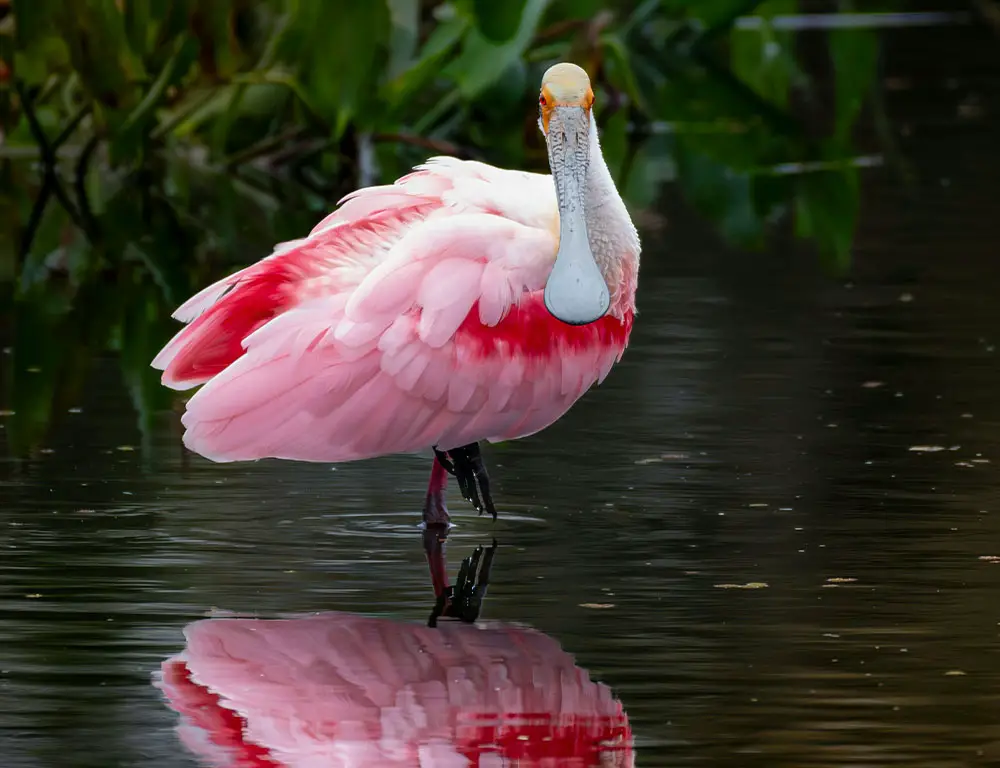
Like many other bird species, spoonbills are susceptible to various diseases and health issues, some of which can be caused by environmental factors, pathogens, or parasites.
Here are some common diseases and treatments for spoonbills:
Avian Botulism
This bacterial disease, caused by Clostridium botulinum, can affect waterbirds like spoonbills that frequent wetland habitats. Symptoms include weakness, paralysis, and difficulty breathing.
Treatment typically involves supportive care, such as fluid therapy, nutritional support, and antitoxin administration if available.
Avian Influenza
Spoonbills can contract avian influenza viruses, especially in close contact with infected individuals or contaminated environments.
Clinical signs may include respiratory distress, lethargy, and decreased appetite. Treatment focuses on supportive care, including fluid therapy and antiviral medications if available.
Parasitic Infections
Spoonbills may suffer from various parasitic infections, including internal parasites like worms and external parasites like lice and mites.
Treatment usually involves antiparasitic medications administered orally, topically, or via injection, depending on the type of parasite and severity of the infestation.
Lead Poisoning
Spoonbills, particularly those inhabiting areas with lead contamination, can ingest lead pellets or fragments, leading to lead poisoning.
Clinical signs may include weakness, tremors, and gastrointestinal disturbances. Treatment involves chelation therapy to remove lead from the body and supportive care to manage symptoms.
Trauma and Injuries
Spoonbills may sustain injuries from collisions with objects, predators, or other birds. Common injuries include fractures, wounds, and soft tissue trauma.
Treatment typically involves wound cleaning, pain management, and supportive care to promote healing. Severe cases may require surgical intervention.
Respiratory Infections
Like other birds, spoonbills can develop respiratory infections caused by bacteria, viruses, or fungi. Symptoms may include coughing, sneezing, and nasal discharge.
Treatment usually involves antibiotics, antifungal medications, and supportive care to alleviate respiratory distress.
Preventive measures such as regular health monitoring, habitat management, and vaccination programs can also help reduce the risk of disease outbreaks in spoonbill populations.
Wrapping Up
Spoonbills are remarkable birds with unique adaptations, behaviors, and ecological significance.
From their distinctive spoon-shaped bills to their complex reproductive cycles and migratory patterns, spoonbills captivate the imagination of bird enthusiasts and conservationists alike.
However, these charismatic birds face numerous threats, including habitat loss, pollution, and disease. Conservation efforts are essential to safeguarding spoonbill populations and the diverse wetland ecosystems they inhabit.
By raising awareness, implementing effective conservation strategies, and promoting habitat preservation, we can ensure a brighter future for these iconic avian species. Thank you so much.